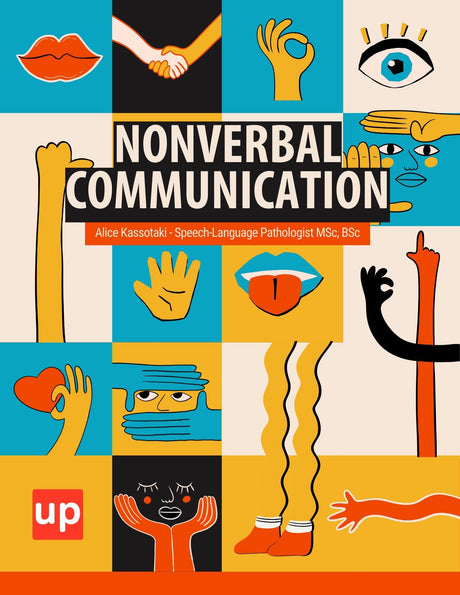Gross motor manipulative skills involve large muscle movements such as throwing, catching, and kicking. These vital skills support physical development and help children confidently explore their environment. In this article, you’ll learn their importance and discover practical activities to enhance these abilities.
Key Takeaways
- Gross motor manipulative skills, such as throwing, catching, and kicking, are fundamental for children’s physical development and overall well-being.
- Engaging activities like obstacle courses and relay races enhance children’s coordination, teamwork, and confidence while practicing these essential skills.
- Understanding and addressing skill level variations, along with using adaptive equipment, are crucial to fostering an inclusive learning environment in gross motor skill development.
Understanding Gross Motor Manipulative Skills

Gross motor manipulative skills involve the use of large muscles for significant movements such as rolling, throwing, catching, kicking, and striking. These skills are crucial for physical activity and typically gross motor skills develop before fine motor skills, which involve smaller, more precise movements. The developmental progression of these skills starts with foundational movements and builds upon them over time, supporting gross motor development.
Examples of gross motor skills include rolling, crawling, walking, running, jumping, and hopping. At around 48 months, children begin to show gross motor skills examples such as rolling a ball underhand, tossing underhand, catching, and kicking. These are the building blocks for more complex skills that children will use throughout their lives.
Importance of Gross Motor Manipulative Skills
Gross motor manipulative skills are essential for children as they help them explore their environment, build strength, and gain confidence. These skills are not just about physical activity; they are integral to a child’s overall development. For instance, obstacle courses can enhance physical abilities by improving strength, balance, coordination, and gross motor skills important motor planning.
These skills are also crucial for participating in various sports and activities, contributing significantly to overall physical fitness. Developing these skills strengthens children’s confidence and encourages engagement in physical activities, promoting a healthier lifestyle.
Differences Between Gross and Fine Motor Skills
While gross motor skills involve large muscle groups for broader movements, fine motor skills focus on smaller, more precise actions such as writing or buttoning a shirt, engaging the small muscles and body movements with force, including locomotor movements.
Understanding this distinction helps in recognizing the different developmental milestones and the specific activities that can enhance each type of skill.
Types of Gross Motor Manipulative Skills

Manipulative skills include handling and controlling objects, which are essential for various sports and physical activities. Examples of gross motor manipulative skills include catching, foot dribbling, hand dribbling, kicking, rolling, striking, underhand tossing, overhand throwing, and volleying. These activities not only improve coordination but also enhance overall physical fitness and basic manipulation skills.
Proper technique is vital. Hand dribbling entails spreading the fingers apart, keeping the palm facing down, and using the fingertips to control the ball. These foundational techniques pave the way for mastering more complex skills.
Throwing and Catching
Throwing and catching form the bedrock of many sports. An overhand throw, released from above shoulder level, involves an upward and forward arm motion for greater distance and accuracy. Conversely, an underhand throw is preferred for shorter distances or precision. These techniques are staples in sports like baseball, basketball, and volleyball, significantly enhancing motor skill development.
Catching involves receiving and securing a thrown object using the hands, requiring anticipation and positioning to effectively secure the throw. This skill is commonly practiced in sports like baseball and basketball, helping to develop coordination and hand-eye coordination, and to catch the thrown object.
Kicking
Kicking involves using the foot or leg to strike a ball, which is essential in many team sports like soccer and rugby. Foot dribbling, a skill where the ball is maneuvered close to the feet, is commonly taught in these sports. Punting, another form of kicking, involves holding the ball or letting it rest on the ground before striking it with kicks.
Proper kicking technique relies on balance and stability provided by the arms and torso. Practicing kicking enhances leg strength and improves balance, making it a crucial skill for physical development of the legs. A good kick is essential for mastering this technique.
Striking
Striking skills, such as hitting a ball with a bat or racket, are typically introduced to children around the age of five. Common sports that involve striking include tennis, badminton, baseball, and golf. These skills require hand-eye coordination, timing, and proper technique for successful execution.
A fun way to introduce striking skills to young children is by using a balloon or beach ball and a pool noodle. This method helps children develop the necessary coordination and timing in a playful and engaging manner.
Activities to Develop Gross Motor Manipulative Skills

Engaging games can make learning manipulative skills enjoyable, significantly enhancing student motivation and participation. Structured play activities offer a fun way for children to improve their gross motor skills through engaging physical games. Adaptive tools can also be crucial in helping children with physical limitations engage in motor skill development activities.
Partner activities, such as passing a ball or beanbag, can effectively develop manipulative skills while using equipment like balls, beanbags, and hoops. These activities not only improve coordination but also foster teamwork and social skills.
Ball Games
Participation in physical activities aids in developing social skills and self-esteem. Engaging in physical activities supports the development of teamwork skills and boosts self-esteem in children. For example, passing a beanbag or ball under the knees in a circle helps improve passing skills and coordination.
Incorporating enjoyable activities can significantly enhance children’s motivation to practice motor skills. Games like soccer, basketball, and playground activities make regular practice of manipulative skills more appealing for children.
Obstacle Courses
Obstacle courses can significantly improve a child’s ability to enhance agility, balance, and spatial awareness. These courses can be set up easily using small objects, making them accessible for different skill levels.
As children navigate these courses, they enhance their coordination and body awareness, making it a fun and effective way to develop gross motor skills as babies grow in their bodies.
Relay Races
Relay races are effective for improving speed and building endurance, making them beneficial for overall physical fitness. These races help develop cooperative skills as participants learn to work together towards a common goal. Engaging in relay races enhances physical capabilities such as strength and coordination through repetitive sprinting and timing.
Teaching Gross Motor Manipulative Skills in Physical Education

Developing manipulative skills early on provides children with long-term benefits in physical education. Activities focusing on manipulative skills help address essential physical education standards across various educational jurisdictions. It’s crucial to emphasize that learning these skills is a process that requires sufficient practice time for mastery.
Educators can benefit from a comprehensive resource that offers 240 task visuals and instructional cues for teaching manipulative skills. Identifying specific difficulties in gross motor skill development can help tailor interventions for individual student needs, ensuring that all children can progress.
Starting with Basics
Improving coordination, motor skills, balance, and confidence are crucial for children to develop basic manipulative skills in physical education classes. These basic motor skills form the foundation for children’s physical development. Starting with the basics is essential when teaching manipulative skills.
For example, dribbling skills require patience and a step-by-step approach during practice. In throwing and catching activities, beginning at close range and gradually increasing the distance enhances competence. Using a small ball as a beanbag is a great starting point for younger children to practice these skills.
Demonstration and Practice
First demonstrating the skills helps students grasp the techniques and movements involved. Starting with basic skills ensures that all students have the necessary foundation to progress.
Adding fun activities to practice sessions keeps students engaged and motivated.
Incorporating Fun and Engagement
Engaging lessons can make the learning process enjoyable and help students retain skills more effectively. Incorporating a variety of activities such as ball games can enhance enjoyment while developing gross motor manipulative skills that students have learned.
Obstacle courses and relay races can also be a fun way to promote agility, balance, and teamwork among students.
Overcoming Challenges in Developing Gross Motor Manipulative Skills
Common obstacles in developing gross motor skills include lack of confidence and limited opportunities for practice. It’s important to address these challenges to ensure all children can develop these essential skills. Continuing to struggle with age-appropriate gross motor milestones can indicate a child is having gross motor skill difficulties with development.
By addressing skill level variations and encouraging consistent practice, we can create an inclusive environment that promotes engagement and progress for all children.
Addressing Skill Level Variations
Addressing skill level variations is crucial to ensure that all students can learn and progress in gross motor manipulative skills. Adaptive equipment, such as softer balls or modified sports gear, can help support children with varying abilities and enhance their learning experience.
Combining consistent practice with the use of adaptive equipment allows educators to effectively manage varying skill levels while balancing and promoting overall progress.
Encouraging Consistent Practice
Incorporating fun and engaging activities helps maintain children’s interest and motivation in practicing gross motor skills. Providing ample practice time and opportunities for children to refine their skills is crucial for their development.
Utilizing adaptive equipment tailored to varying ability can enhance participation and enthusiasm in practice.
Utilizing Adaptive Equipment
Adaptive equipment can significantly enhance participation in activities for children with gross motor challenges. Mobility aids such as walkers and wheelchairs allow children with disabilities to engage more fully in physical activities. Assistive devices can be tailored to individual needs, helping children improve their motor skills and independence.
Benefits of Strong Gross Motor Manipulative Skills

Gross motor manipulative skills are essential for a child’s physical development and involve handling objects with precision, speed, and control. Practicing these skills supports the development of overall physical literacy, which is crucial for lifelong physical activity. Engaging in manipulative skill activities helps children build stamina and improve their balance. These skills also promote social interaction and teamwork, contributing to a child’s social and emotional well-being.
Additionally, early exposure to manipulative skills leads to eager participation in sports and hobbies, fostering teamwork and social skills. Regular practice of these skills contributes to overall health and well-being, making them a vital aspect of child development.
Enhanced Physical Fitness
Developing gross motor manipulative skills leads to enhanced physical health and fitness. Strong gross motor skills promote increased muscle strength and endurance, contributing to overall physical fitness. These skills foster better physical health and well-being throughout life, ensuring that children grow up healthy and active.
Improved Academic Performance
Physical activity stimulates brain function, enhancing cognitive development and leading to improved academic learning abilities. Children who engage in regular physical activity demonstrate better focus and concentration, which are crucial for academic success.
The development of gross motor skills has been correlated with higher standardized test scores and overall academic achievement.
Social and Emotional Benefits
Developing manipulative skills boosts confidence and self-esteem through achievement. Relay races and team activities foster teamwork, as participants rely on each other’s performance to succeed.
These activities help children learn essential traits like determination, accuracy, and teamwork, which are significant benefits gained from physical activities.
Upbility offers a wide range of resources and tools designed to support the development of gross motor manipulative skills in children. With expertly crafted materials, including step-by-step guides, activity plans, and adaptive equipment recommendations, Upbility empowers educators and parents to effectively teach and enhance these essential skills. By providing accessible and practical solutions, Upbility ensures that children of all abilities have the opportunity to thrive physically, socially, and emotionally.
Summary
In summary, gross motor manipulative skills are foundational to a child’s physical, cognitive, and social development. From rolling and crawling to throwing, catching, and kicking, these skills enable children to explore their environment, build strength, and gain confidence. Engaging in activities like ball games, obstacle courses, and relay races not only enhances these skills but also makes learning fun.
By understanding the importance of these skills, addressing challenges, and incorporating adaptive equipment, we can ensure that all children have the opportunity to develop strong gross motor manipulative skills. Encourage your children or students to practice consistently, and they will reap the benefits in physical fitness, academic performance, and social-emotional well-being.
Original content from the Upbility writing team. Reproduction of this article, in whole or in part, without credit to the publisher is prohibited.
Frequently Asked Questions
What are gross motor manipulative skills?
Gross motor manipulative skills are essential movements that engage large muscle groups, including activities such as rolling, throwing, catching, kicking, and striking. Mastery of these skills is vital for children's physical activity and overall development.
Why are gross motor manipulative skills important?
Gross motor manipulative skills are crucial as they enable children to explore their surroundings, enhance their physical strength, and foster confidence. These skills are foundational for physical fitness and participation in sports, contributing to overall development.
How do gross motor skills differ from fine motor skills?
Gross motor skills utilize larger muscle groups for activities such as walking or jumping, whereas fine motor skills require smaller muscles for detailed tasks like writing or manipulating small objects. Understanding this distinction is essential for developmental assessments.
What are some activities to develop gross motor manipulative skills?
Engaging in ball games, obstacle courses, and relay races significantly enhances gross motor manipulative skills by fostering coordination, balance, and strength. Therefore, incorporating these activities into playtime can make skill development enjoyable and effective.
How can adaptive equipment help in developing gross motor manipulative skills?
Adaptive equipment, like softer balls and mobility aids, enables children with different abilities to participate actively, thereby enhancing their gross motor manipulative skills and promoting inclusivity. The use of such tools is crucial in supporting their development effectively.
References
-
Virginia Commonwealth University. (n.d.). Fine & Gross Motor Skills. Retrieved from https://www.vcu.edu/motor-skills
-
National Association for Sport and Physical Education. (2004). Moving into the Future: National Standards for Physical Education. Reston, VA: Author.
-
Cools, W., De Martelaer, K., Samaey, C., & Andries, C. (2008). Fundamental Movement Skill Performance of Preschool Children in Relation to Family Context. Journal of Sports Science and Medicine, 7(1), 15–22.
-
Gallahue, D. L., & Ozmun, J. C. (2006). Understanding Motor Development: Infants, Children, Adolescents, Adults. Boston: McGraw-Hill.
-
Payne, V. G., & Isaacs, L. D. (2017). Human Motor Development: A Lifespan Approach. New York: Routledge.
-
Goodway, J. D., & Branta, C. F. (2003). Influence of a Motor Skill Intervention on Fundamental Motor Skill Development of Disadvantaged Preschool Children. Research Quarterly for Exercise and Sport, 74(1), 36-46.
-
Graham, G., Holt/Hale, S. A., & Parker, M. (2010). Children Moving: A Reflective Approach to Teaching Physical Education. New York: McGraw-Hill.









